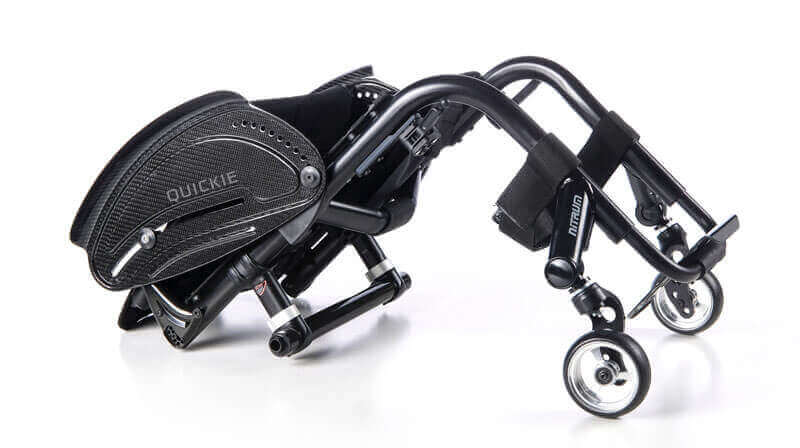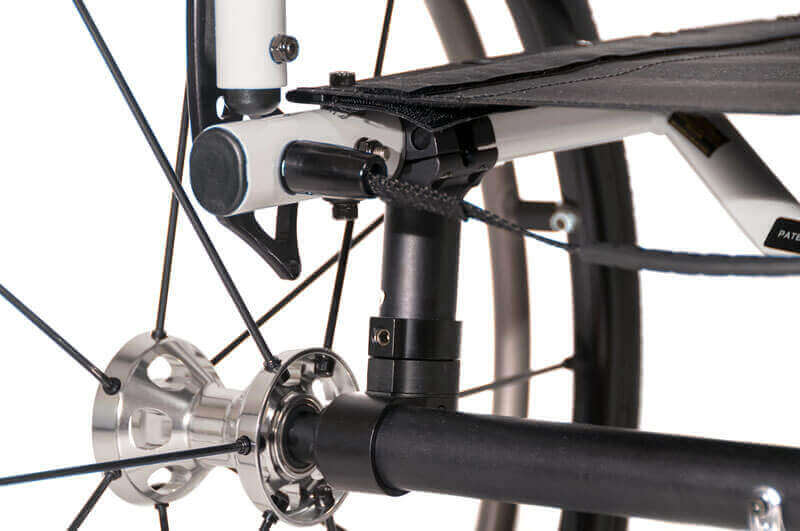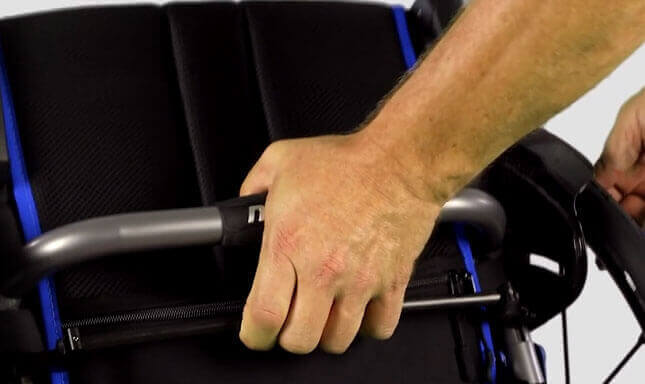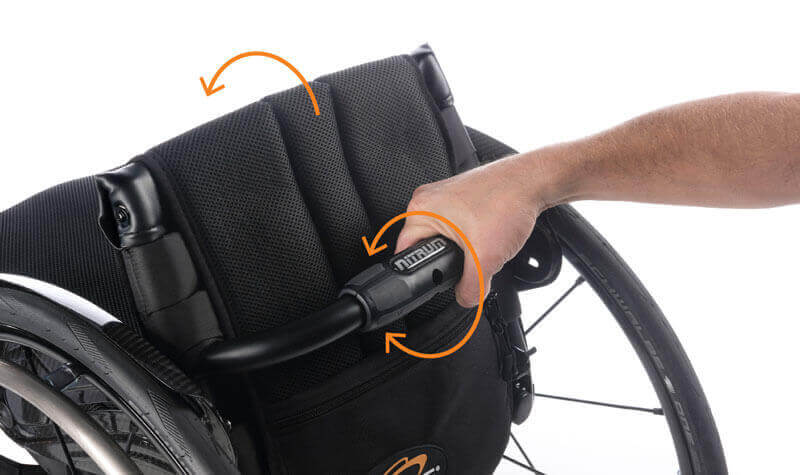Partilhar:
Take it offline!
This Education in Motion resource is also available as a printable PDF.
Descarregar PDF
When it comes to the benefits of ultra lightweight wheelchair designs and configurations for active manual wheelchair users, the clinical evidence is strong. An individually designed ultra lightweight wheelchair is intended to serve as an extension of the individual user, so that he/she can independently participate in not only the basic activities of daily living, but also activities of choice. The ability to get out into the community via a personal vehicle or public transportation with their wheelchair is often a must-have when a client creates a list of what is important to take into consideration when getting a new wheelchair. In this blog, we will take a closer look at a couple of elements to consider related to transporting a rigid ultra lightweight wheelchair.
First, let's make sure we all agree on the basics:
- A rigid frame ultra lightweight wheelchair does not have a cross-brace for lateral folding, but may have a back that folds down.
- Rigid frame ultra lightweight wheelchairs are generally lighter than a folding frame wheelchair due to materials and design.
Weight
Before we get too far into the topic of weight, I want to make sure we note weight is not the only factor that defines an ultralight wheelchair. The ability to be specifically designed to meet an individual user's measurements, the rear wheel position, and the propulsion technique will directly and significantly affect the wheelchair's performance, stability, maneuverability, and postural support of the end user. For the purpose of this blog, we are talking about weight in relation to transporting a rigid ultra lightweight wheelchair.
When looking at models, brands, and options for your client's ultra lightweight wheelchair, it is important to look at two types of weights:
Total weight
Frequently, wheelchair manufacturers use a standard configuration and show an estimated weight of the wheelchair fully assembled (without positioning system). Keep in mind that every aspect of the configuration will change the final weight of the wheelchair (dimensions, caster type, rear wheel type, etc.), but this reference is a great guide to compare frames and to get an idea of how much the final configuration might weigh.
Transport weight

"Transport weight" refers to the weight of the wheelchair without the rear wheels and is crucial for end users who carry their wheelchair in and out of their car. Sitting in the driver's seat, many clients take the rear wheels off and lift the frame from the ground, across the front of their body, and into the passenger seat. A low transport weight will help the end user carry the frame independently. This is especially beneficial for end users with reduced mobility or strength in the upper extremities.
Folding Back
Another important feature of a rigid ultra lightweight wheelchair is the ability to fold down the backrest. Some end users prefer a non-folding backrest mainly to increase its rigidity and reduce overall weight. However, many users will opt for a folding back to decrease potential for difficulty in transporting their rigid ultra lightweight wheelchair in their personal vehicles, the vehicles of friends and family, or in taxis. Ideally, the backrest will lock when folded to allow the end user to lift the wheelchair with confidence and prevent the back from opening during transfers.
Let's look at a few folding mechanism options:
Lanyard mechanism

Some backrests fold down with a lanyard that releases the back posts. This style is convenient for end users who don't have strength or range of motion to close their hands as they can pull down the lanyard and activate the mechanism.
Quick release bar

Other backrests offer a bar instead. This has the advantage of not loosening over time, which extends the lifespan of the equipment.
Twist-Lock bar

In a more modern design like the QUICKIE Nitrum, the user has the option to twist the bar behind the backrest with one hand and use the same bar to bring the backrest up.
Helping your clients select the most clinically appropriate and functional ultra lightweight wheelchair is a very important responsibility. Having a true understanding of what the client's complete life looks like will aid you in ensuring the wheelchair takes into account various aspect of life, including transporting the wheelchair out into the world they would like to explore.